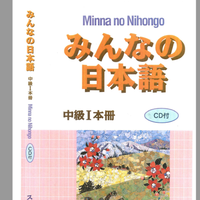地図
ちず
Karte
map
Mapa
Carte
Mappa
Kaart
Mapa
Карта
Karta
地圖
地図 A は 、 オーストラリア の 高校 教師 マッカーサー が 1979 年 に 作った 「 南北 を 逆に した 世界 地図 」 である 。
ちず|a||おーすとらりあ||こうこう|きょうし|||とし||つくった|なんぼく||ぎゃくに||せかい|ちず|
Map A is the "World Map with the North and South Reversed" created by MacArthur, a high school teacher in Australia, in 1979.
Карта А - это "перевернутая с севера на юг карта мира", созданная австралийским школьным учителем Макартуром в 1979 году.
地图A是澳大利亚中学教师麦克阿瑟于1979年制作的“南北颠倒的世界地图”。
彼 は 日本 留学 中 に 、 アメリカ 人 留学 生 の かいた 世界 地図 を 見て 、 びっくり した 。
かれ||にっぽん|りゅうがく|なか||あめりか|じん|りゅうがく|せい|||せかい|ちず||みて||
While studying in Japan, he was surprised to see the world map of an American study abroad student.
Во время учебы в Японии он был удивлен, увидев карту мира, нарисованную американским студентом.
他在日本留学时,看到一位美国学生绘制的世界地图,大吃一惊。
その 地図 に オーストラリア が なかった のだ 。
|ちず||おーすとらりあ|||
Australia wasn't on the map.
Австралии не было на карте.
澳大利亚不在该地图上。
人間 の 目 は 、 観察 しよう と する 面 の 中央 より 少し 上 の 方 を 自然に 見る そうである 。
にんげん||め||かんさつ||||おもて||ちゅうおう||すこし|うえ||かた||しぜんに|みる|そう である
The human eye seems to naturally see a little above the center of the surface to be observed.
L'occhio umano guarda naturalmente leggermente al di sopra del centro della superficie che sta cercando di osservare.
Человеческий глаз, естественно, смотрит немного выше центра поверхности, которую он пытается наблюдать.
据说人眼自然地看向被观察表面中心的略上方。
據說人眼自然地看向被觀察表面中心的略上方。
下 の 方 は 努力 して 見よう と し ない と 、 見え ない のだ 。
した||かた||どりょく||みよう|||||みえ||
The lower one cannot be seen without trying hard to see it.
Вы должны приложить усилия, чтобы увидеть, что там внизу.
除非你努力看到它,否则你看不到底部。
南 半球 に ある オーストラリア は 、 アメリカ 人 留学 生 の 意識 から 忘れられて いた のである 。
みなみ|はんきゅう|||おーすとらりあ||あめりか|じん|りゅうがく|せい||いしき||わすれ られて||
Australia in the Southern Hemisphere was forgotten by the consciousness of American study abroad students.
Австралия в Южном полушарии была забыта в сознании американских студентов, обучающихся за рубежом.
位于南半球的澳大利亚在美国留学生的心目中早已被遗忘。
そこ で 、 マッカーサー が 自分 で 作って みた の が 地図 A である 。
||||じぶん||つくって||||ちず|a|
There, MacArthur created Map A by himself.
Затем Макартур попытался создать свою собственную версию, карту А.
于是麦克阿瑟亲自制作了地图A。
地図 は 普通 、 北 を 上 に して かかれる 。
ちず||ふつう|きた||うえ|||
Maps are usually drawn with the north facing up.
Карты обычно рисуют северной стороной вверх.
地图通常以北在顶部绘制。
地圖通常在頂部繪製北方。
では 、 なぜ 北 が 上 で なければ なら ない のだろう か 。
||きた||うえ||||||
So why should the North be on top?
Так почему же север должен быть на вершине?
那么为什么北一定要在顶部呢?
那麼為什麼北方必須在頂部呢?
これ は 地図 に 経緯度 が 使わ れる ように なって から の 習慣 であって 、 古い 地図 に は 南 が 上 の もの も 多い 。
||ちず||けいい たび||つかわ||||||しゅうかん||ふるい|ちず|||みなみ||うえ||||おおい
This has been a custom since the use of latitude and longitude in maps, and many older maps have the south up.
Так было принято с тех пор, как на картах стали использовать долготу и широту, причем на многих старых картах в качестве верхней широты указывался юг.
这是在地图上开始使用经纬度坐标时开始的一种习俗,许多旧地图的顶部都是南。
這是在地圖上開始使用經緯度坐標時開始的一種習俗,許多舊地圖的頂部都是南。
北 が 上 と いう 常識 は 、 実は 北 半球 の 国 の 人々 が 無意識に 持って いる 差別 の 表れ かも しれ ない 。
きた||うえ|||じょうしき||じつは|きた|はんきゅう||くに||ひとびと||むいしきに|もって||さべつ||あらわれ|||
The common sense that the North is above may actually be a manifestation of the unconscious discrimination that people in the countries of the Northern Hemisphere have.
Распространенное мнение о превосходстве Севера на самом деле может быть бессознательным выражением дискриминации, которой подвергаются жители стран Северного полушария.
北方为上的常识,其实可能是北半球国家人们不自觉的一种歧视的表现。
地図 B は 南北 を 上下 で は なく 、 左右 に 置いて 、 作った もの である 。
ちず|b||なんぼく||じょうげ||||さゆう||おいて|つくった||
Map B was created by placing the north and south on the left and right, not on the top and bottom.
Карта B была создана путем размещения север-юг и юг-юг на левой и правой сторонах карты, а не вверху и внизу.
创建地图 B 时,南北朝向左右而不是上下。
創建地圖 B 時,南北朝向左右而不是上下。
これ なら 、 少なくとも 、 北 半球 の 人々 も 南 半球 の 人々 も 文句 は 言わ ない だろう 。
||すくなくとも|きた|はんきゅう||ひとびと||みなみ|はんきゅう||ひとびと||もんく||いわ||
Then, at least, people in the northern hemisphere and people in the southern hemisphere wouldn't complain.
Таким образом, по крайней мере, жители северного и южного полушарий не будут жаловаться.
这样,至少北半球的人和南半球的人就不会抱怨了。
這樣,至少北半球的人和南半球的人就不會抱怨了。
しかし 、 アフリカ と 南 アメリカ は どう だろう か 。
|あふりか||みなみ|あめりか||||
But what about Africa and South America?
Но как насчет Африки и Южной Америки?
但是非洲和南美洲呢?
但是非洲和南美洲呢?
「 位置 の 平等 」 は 難しい 。
いち||びょうどう||むずかしい
"Position equality" is difficult.
Равенство положения труднодостижимо.
“地位平等”很难。
“地位平等”很難。

